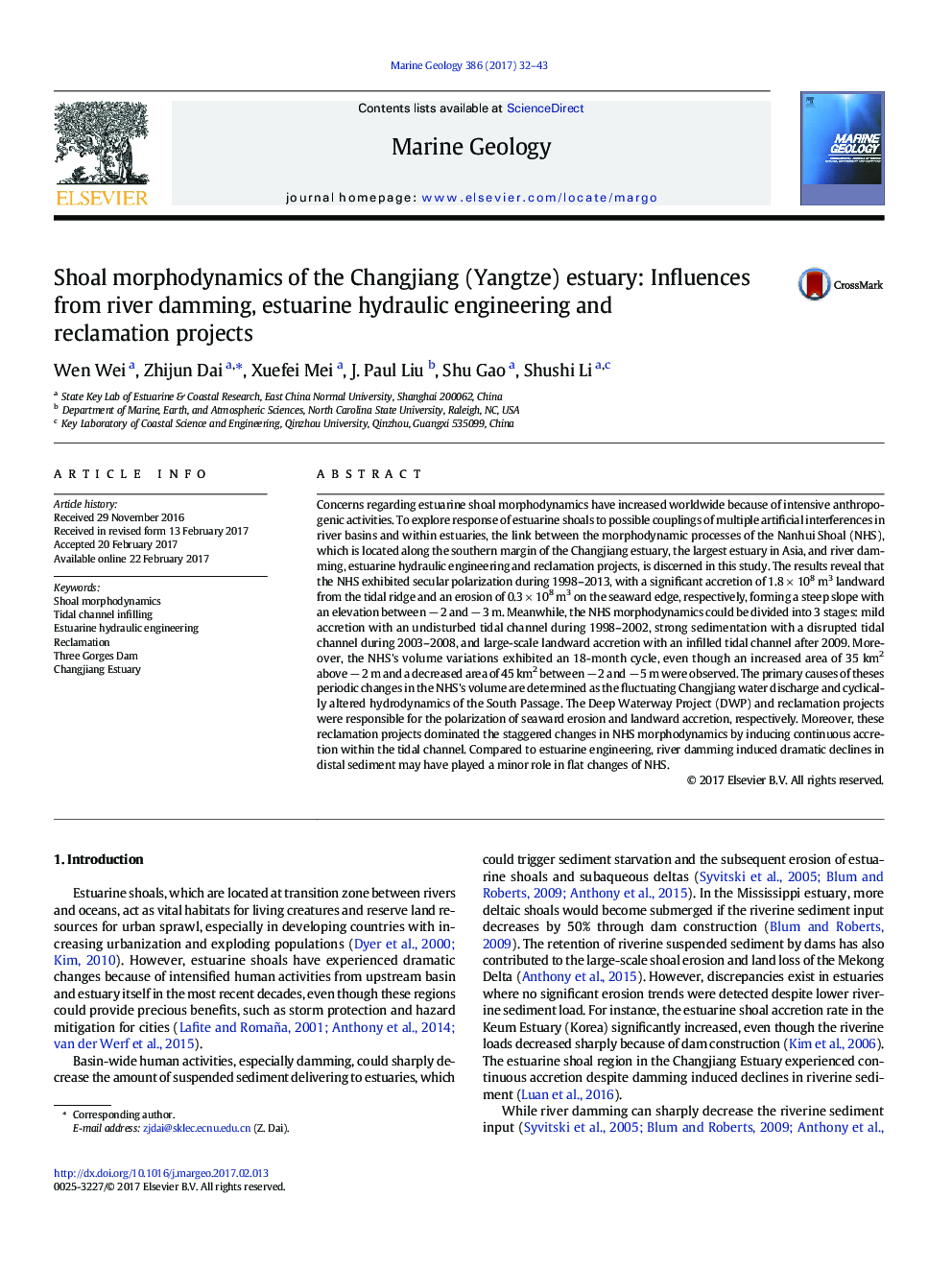| کد مقاله | کد نشریه | سال انتشار | مقاله انگلیسی | نسخه تمام متن |
|---|---|---|---|---|
| 5784510 | 1639066 | 2017 | 12 صفحه PDF | دانلود رایگان |

- Under couplings of reclamation and hydraulic engineering, estuarine shoal evolution could exhibit polarization.
- Cyclically-altered regional hydrodynamics could be likely to control fluctuations of estuarine shoal morphodynamics.
- Intensive estuarine engineering could play a more important role in shoal evolution, relative to river damming.
Concerns regarding estuarine shoal morphodynamics have increased worldwide because of intensive anthropogenic activities. To explore response of estuarine shoals to possible couplings of multiple artificial interferences in river basins and within estuaries, the link between the morphodynamic processes of the Nanhui Shoal (NHS), which is located along the southern margin of the Changjiang estuary, the largest estuary in Asia, and river damming, estuarine hydraulic engineering and reclamation projects, is discerned in this study. The results reveal that the NHS exhibited secular polarization during 1998-2013, with a significant accretion of 1.8 Ã 108 m3 landward from the tidal ridge and an erosion of 0.3 Ã 108 m3 on the seaward edge, respectively, forming a steep slope with an elevation between â 2 and â 3 m. Meanwhile, the NHS morphodynamics could be divided into 3 stages: mild accretion with an undisturbed tidal channel during 1998-2002, strong sedimentation with a disrupted tidal channel during 2003-2008, and large-scale landward accretion with an infilled tidal channel after 2009. Moreover, the NHS's volume variations exhibited an 18-month cycle, even though an increased area of 35 km2 above â 2 m and a decreased area of 45 km2 between â 2 and â 5 m were observed. The primary causes of theses periodic changes in the NHS's volume are determined as the fluctuating Changjiang water discharge and cyclically altered hydrodynamics of the South Passage. The Deep Waterway Project (DWP) and reclamation projects were responsible for the polarization of seaward erosion and landward accretion, respectively. Moreover, these reclamation projects dominated the staggered changes in NHS morphodynamics by inducing continuous accretion within the tidal channel. Compared to estuarine engineering, river damming induced dramatic declines in distal sediment may have played a minor role in flat changes of NHS.
485
Journal: Marine Geology - Volume 386, 1 April 2017, Pages 32-43